Every morning at around 9.30am at our beautiful Waikiki hotel, a large white box would arrive and be secreted beside the valet and entry area. I loved this box, as I knew inside were hundreds of fresh dendrobium orchid leis which would be placed around the necks of weary but smiling guests of the hotel.
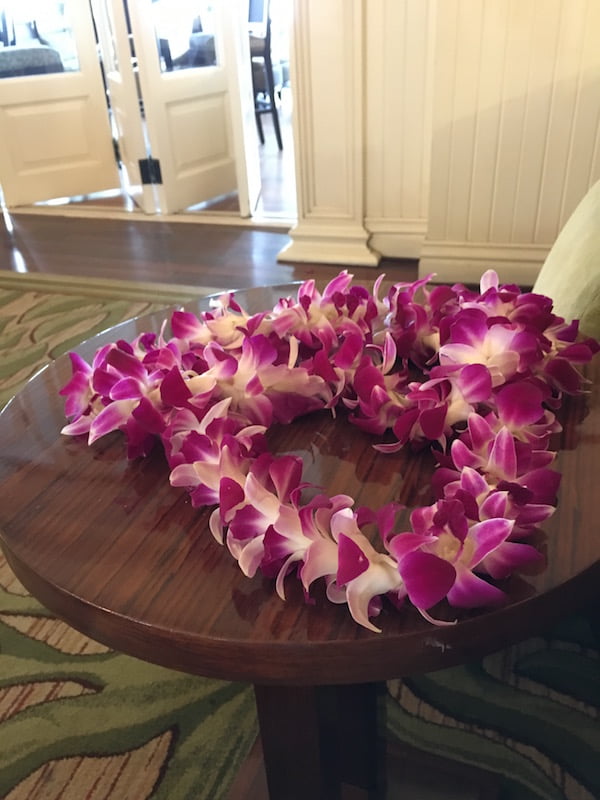
Fresh welcome leis on the table – but are they ‘Hawaiian’?
It was nice to see an ancient Hawaiian symbol of hospitality seemingly still widespread today as well as the genuine smiles they elicited from the tired, weary travellers arriving in the lobby. So enamoured with this romantic custom as I was, I often made a point of lingering around later when the staff would change shifts, in order to get my hands on any surplus leis they were keen to offload.
As is often the case in life, however, not all is as it seems. One morning while waiting in the lobby, I managed to get even closer to the treasured box. Imagine my surprise to see the box covered in official – looking stamps and stickers, all clearly indicating that these stunning flower garlands had just came fresh from Honolulu airport – after being grown, picked and assembled in Indonesia! Verified and approved by US Customs, these foreign-grown blooms were now ready to assume their new identity of a traditional Polynesian welcoming gift in land where, ironically, they already grew like weeds!
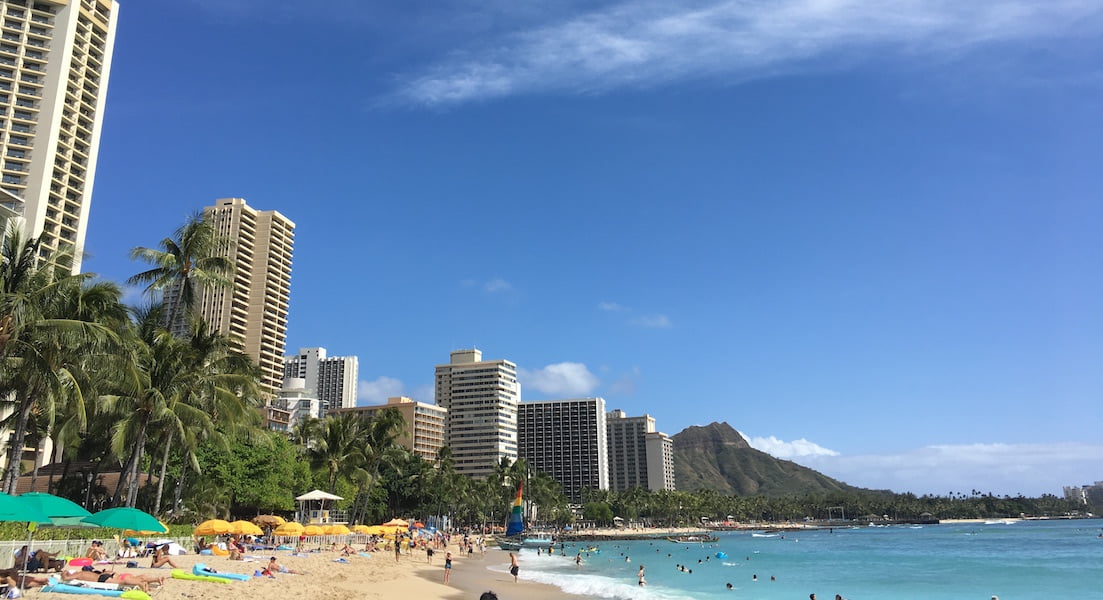
Waikiki Beach, Hawaii
As it turns out, this was not at all unusual in the islands. Despite being endowed with rich, volcanic soil caressed by light rain, soft ocean breezes and a pleasant, warm climate year round, the US Office of Planning estimates that approximately 90% of all food and agricultural products consumed in the Hawaiian archipelago is produced elsewhere. Being the most remote populated island archipelago in the world at some 2,390 miles from the nearest landmass, that means most fresh food and flowers come arrive in the islands with a huge travel footprint.
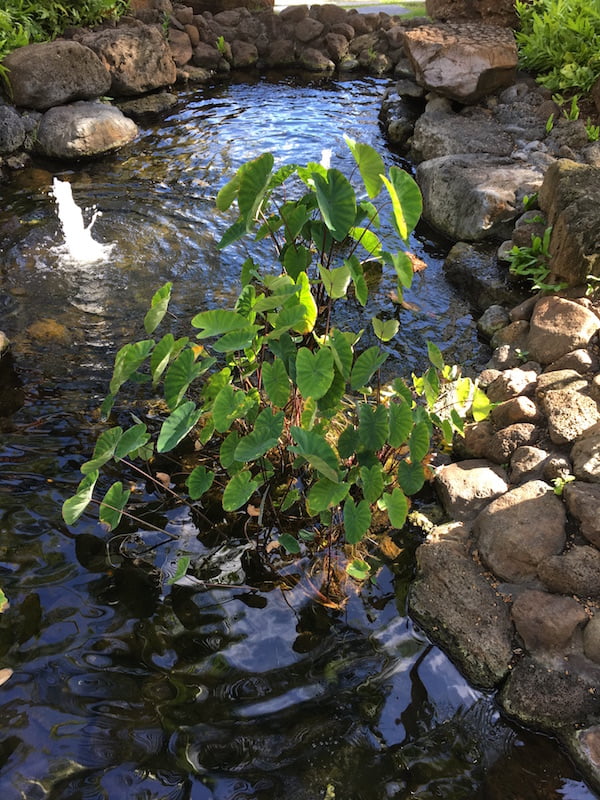
Taro growing in the hotel gardens, Hawaii
Traditionally, this was not the case. Indigenous Hawaiians were completely self-sufficient and crops of taro, bananas and coconuts were ubiquitous throughout the islands. However, waves of immigration, a growing population and industrialised workforce have seen precious farmland converted to housing and other uses, essentially eliminating horticulture and agriculture from the islands.
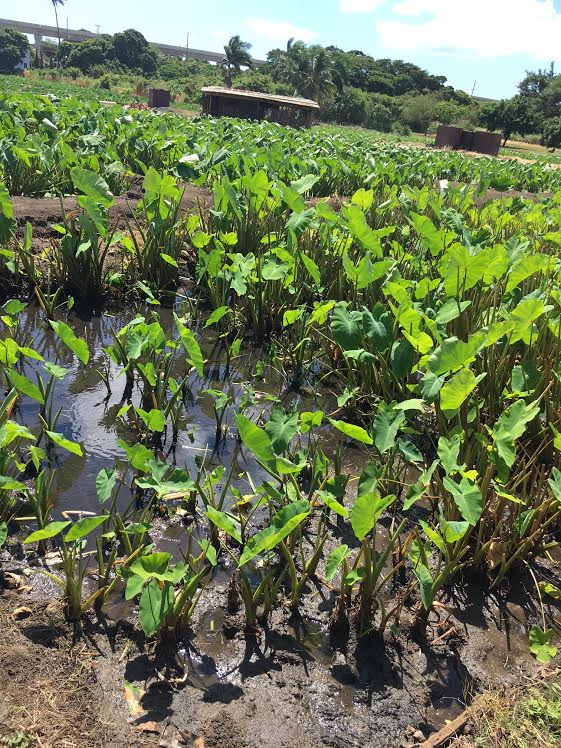
Traditional taro field in Hawaii
As agriculture has been pushed offshore, the need for food transportation has resulted in a myriad of additional costs, making fresh food and flowers among the most expensive items available. This is reflected in even the traditional of island customs, where It is now cheaper to grow flowers in Indonesia and have them strung together in a foreign land before even arriving in Hawaii, then it is to produce and assemble them locally. Admittedly, I was initially disappointed to learn this. However, is this really such a bad thing?
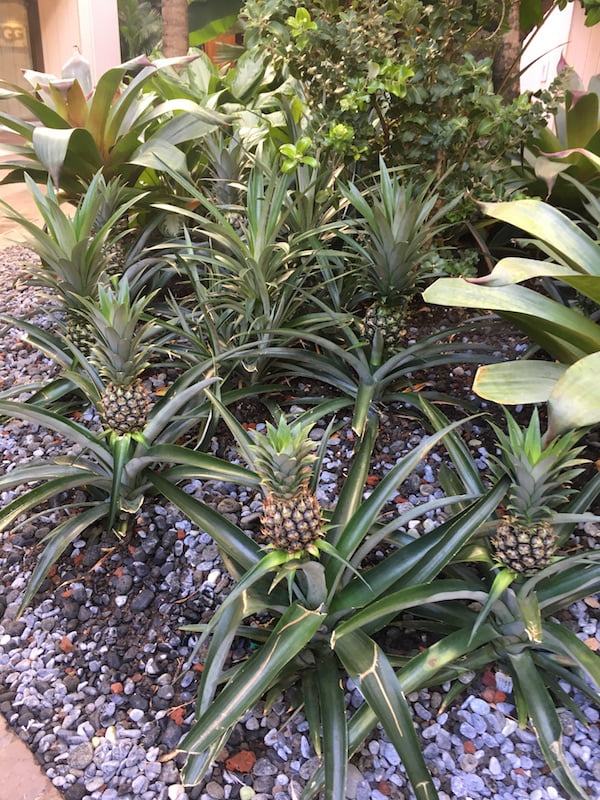
Pineapples growing in the Hawaiian hotel garden
It was no secret that the issue of flowers and fresh produce arriving from wherever had also entered the public’s consciousness. In a symbolic response to the issue, public plantings and hotel gardens in the tourist areas of Waikiki have increasingly incorporated traditional food crops as part of their ornamental garden displays. The concept behind it is to increase knowledge of traditional food crops and culturally important plant species. In several hotel lobbies, I saw pineapples and bananas are tended alongside heliconia and bougainvillea, while wetland taro is now commonly grown in ponds and hotel courts. It increasingly appears that the days of fake grass skirts and Elvis tunes have given way to a more introspective, more thoughtful representation of the issues facing this ‘paradise’.
But what does this really mean? At the risk of being labelled cynical – I would suggest realistic – our cut flowers and fresh produce will increasingly come from further afield. Despite the recent fads in gardening pertaining to permaculture, edible plants and community gardens – nothing has or will come close to replacing our demand for store-bought fruits and vegetables out of season and at our convenience.
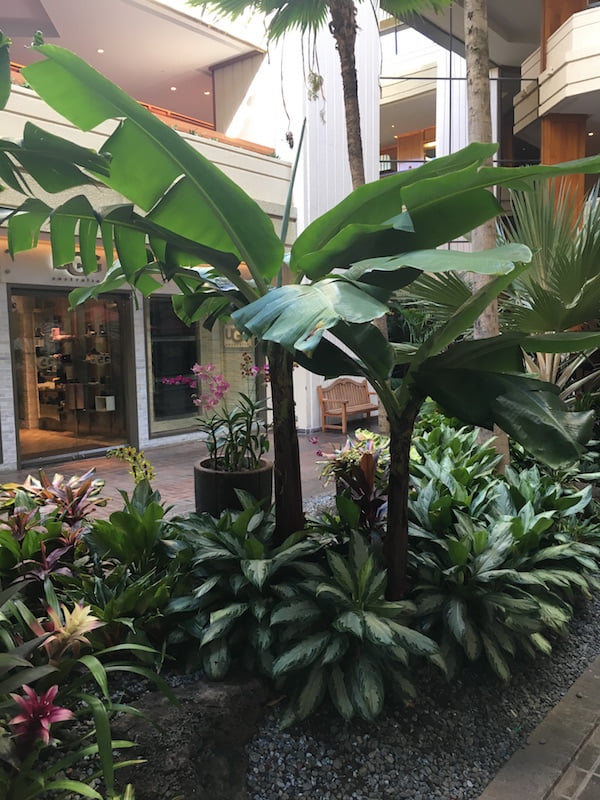
Hotel gardens with bananas and other edibles
Similar to Hawaii, our cities in Australia have increased in size and devoured the agricultural land traditionally located on the perimeter. As a result, and combined with the current global economy, it is now cheaper and easier to have, for example, bananas trucked in from Queensland, mangoes from Mexico and avocados from New Zealand. As trade agreements increase and consumers eschew the words “out of season”, our fresh produce will continue to arrive from further and further away.
This begs the question – is this such a bad thing as some suggest? Attempting to grow a tomato vine and a few herbs in a suburban courtyard might sound nice but who would anyone really be willing to forgo our current supermarket selection of fruits and flowers in favour of the few crops available to our ancestors who didn’t have the benefit of transport and economies of scale? Or access to cut flowers consisting of a small selection of blooms that anyone locally could grow anyway?
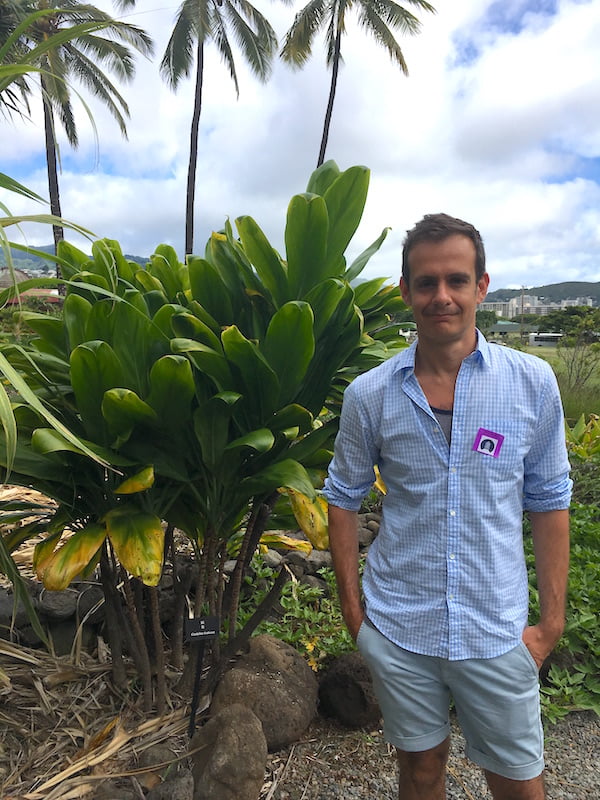
Enjoying Hawaii
Admittedly, I was initially a little disappointed to discover our ‘Hawaiian’ leis were coming from Indonesia. However, in retrospect, it could be argued that this was positive thing – a triumph of the modern economy, if you will – a win for those growers in Indonesia and those sellers and middlemen in the Hawaiian islands. Those who once grew orchids in Oahu have benefitted from ballooning land prices and moved into other areas. Would it be selfish on my part to want something produced locally when it is clearly so much beneficial for all involved to outsource the work?
In the case of the lei, at least, the significance lies with what is symbolises and communicates – not with where it was grown or assembled. And, at the very least, the smiles they generated on the faces of all the weary travellers to the islands were 100% genuine. And that’s all that matters.
